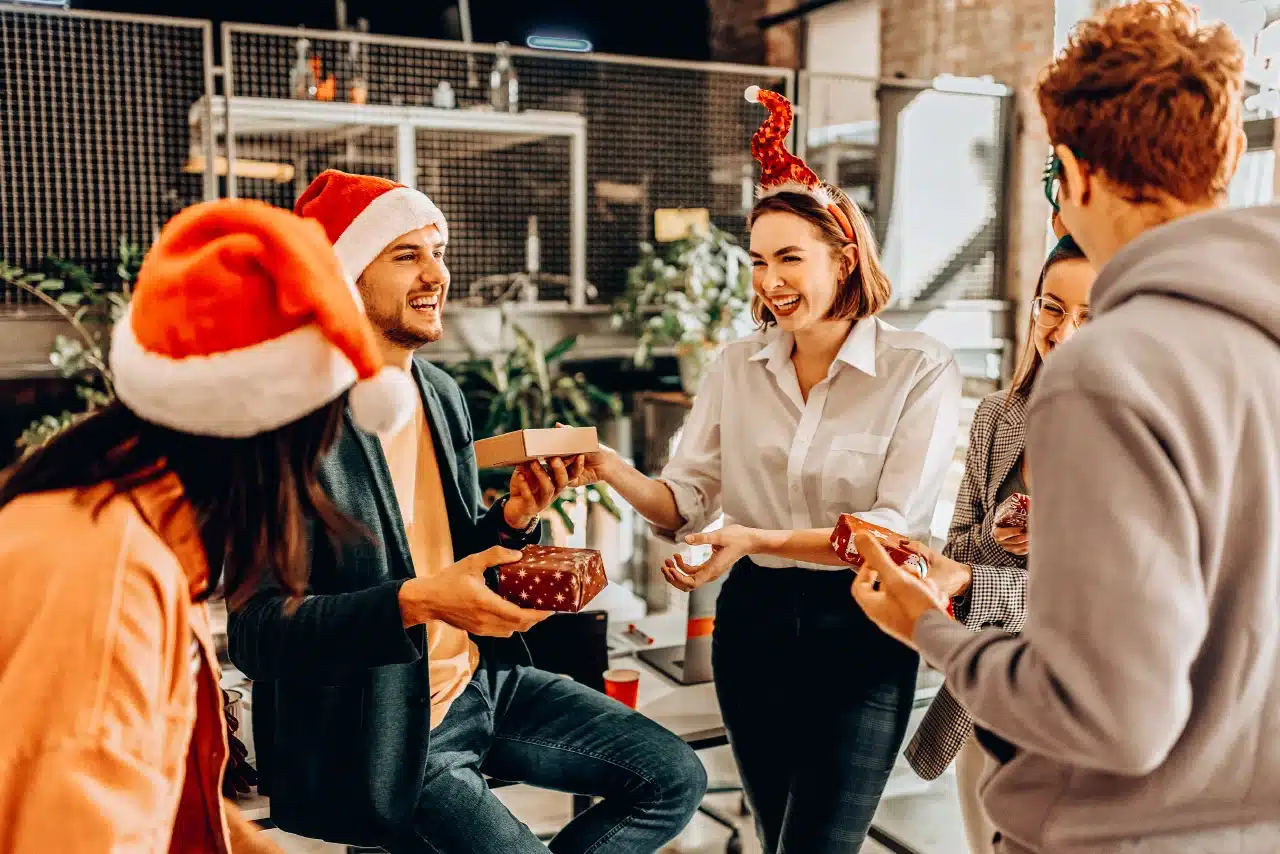Company holiday parties are often a highlight of the workplace calendar, offering opportunities to celebrate success, foster camaraderie, and boost morale. Yet, alongside the festivities, these gatherings can present significant risks if not properly managed. As an HR professional, it falls upon you to ensure that your company’s holiday event is both enjoyable and free from unnecessary liability.
Through detailed planning and strategic management, HR can facilitate a joyful and incident-free holiday celebration. In this blog post, we’ll explore strategic measures and best practices that HR teams can implement to mitigate risks during company holiday parties.
Setting the Foundation: Clear Purpose and Policies
Defining the Purpose of the Event
Every successful party begins with a well-defined purpose. Whether it’s to show appreciation for your employees, celebrate collective achievements, or enhance team morale, understanding the objective can steer planning in a beneficial direction. If the aim is team-building, structured activities like games or recognition ceremonies might take center stage. Alternatively, a relaxed networking session could suffice if the goal is simply to celebrate company success.
Establishing Policies and Expectations
Ahead of the celebration, HR should reiterate that standard workplace policies still apply. These include rules surrounding harassment, discrimination, and the company’s code of conduct. A well-structured pre-event memo or email outlining expected behavior can set the tone and clarify consequences for any misconduct. By fostering an atmosphere of respect and inclusivity, HR can lay the groundwork for a successful event.
Managing Alcohol Consumption and Ensuring Alternatives
Given that alcohol might be a featured beverage at holiday events, managing its consumption is crucial in curbing associated risks. Here’s how:
- Limit Service: Restrict alcohol service hours or use drink tickets to moderate consumption.
- Employ Professional Bartenders: Ensure bartenders are certified to manage drink service and recognize intoxication thresholds.
- Offer Non-Alcoholic Options: Providing a range of non-alcoholic drinks can cater to all employees, including those looking to pace themselves or abstain altogether.
- Include Substantial Food Pairings: Offering hearty food options can lessen alcohol’s impact and keep energy levels up throughout the event.
Promoting Inclusivity and Cultural Sensitivity
A company’s party should reflect its core values, including diversity and inclusivity. When planning, HR should consider adopting neutral themes to cater to a wide audience, ensuring no particular tradition or festival is inadvertently highlighted over another. Dietary preferences and cultural sensitivities are also key aspects for consideration, ensuring that event logistics, such as timing, and location, cater to everyone’s needs.
Tackling Potential Harassment and Safety Concerns
HR must preemptively address potential harassment concerns to maintain a safe and respectful environment during company gatherings.
- Zero-Tolerance Policy: Reaffirm zero tolerance toward harassment before the event, making clear the prohibited behaviors.
- Active Event Monitors: Designate HR representatives to supervise the event, ready to intervene if any issues arise.
- Facilitate Reporting: Encourage employees to report concerns, ensuring they know how to access reporting channels.
Safe Transportation and Post-Event Strategies
Providing safe transportation options can minimize risks related to employees potentially driving under the influence:
- Rideshare Vouchers: Partner with services like Uber or Lyft to facilitate easy travel home.
- Shuttle Services: Arrange shuttles for larger gatherings to and from the venue.
- Designate and Reward Sober Drivers: Recognize those volunteering as sober drivers with incentives.
Finally, post-event follow-up is invaluable for sustainable growth in event management. Conduct anonymous employee surveys to gather feedback and address any complaints transparently and promptly. These insights will be instrumental in refining future events.
Conclusion
Company holiday parties are a platform for celebration, reflection, and connection. By embracing these best practices, HR professionals can significantly mitigate potential risks, ensuring these events are both safe and enjoyable for all participants. Through careful planning and a proactive stance on safety and inclusivity, HR can host holiday parties that truly reflect organizational values and priorities.
By implementing a strategic HR-focused approach, you safeguard not just the event itself but also the community and relationships within your workplace, promoting a culture of respect, enjoyment, and shared experience.




